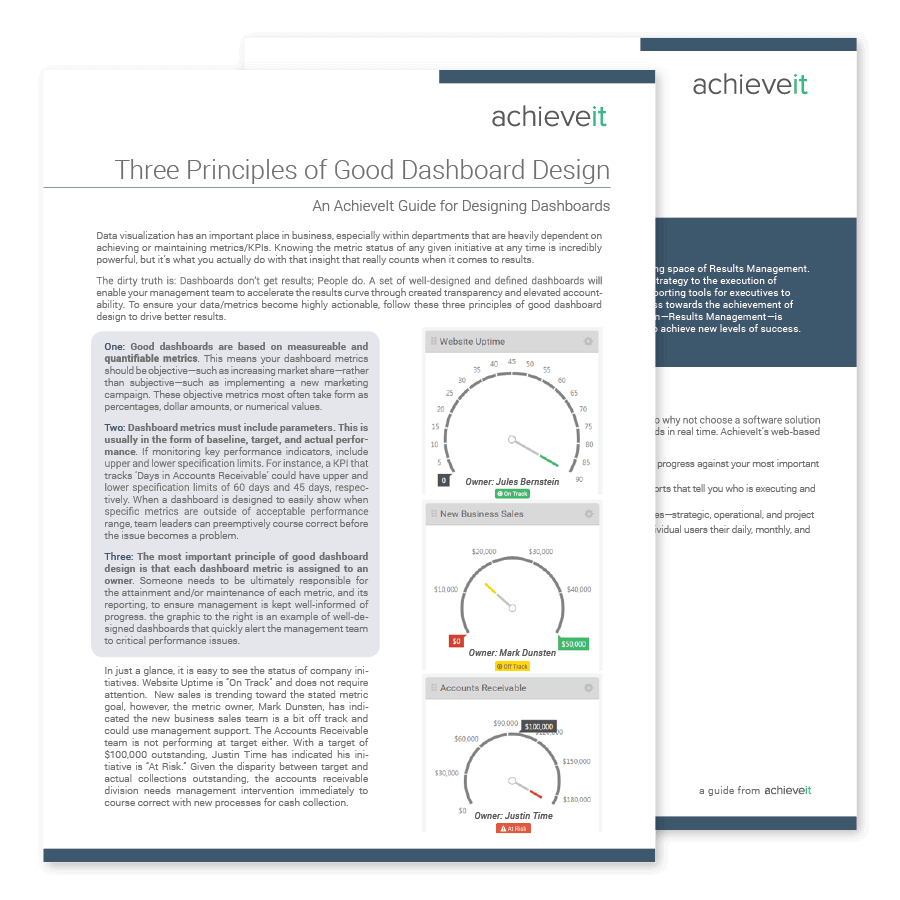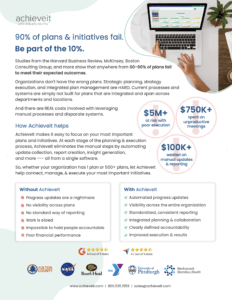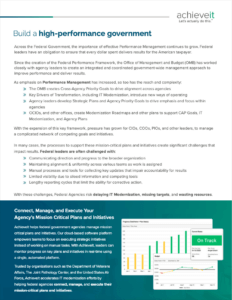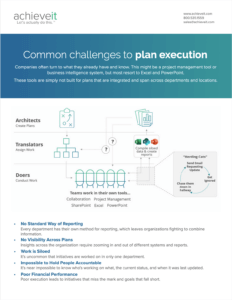The key to driving results isn’t solely based on aesthetically pleasing dashboards; it’s a combination of truly well-designed and defined dashboards and a team that knows how to take action upon the data/metrics that follow.
In this guide, you will learn:
- The three principles of good dashboard design to drive better results
- How a culture of transparency and elevated accountability can enable your management team
- The ease of creating and using custom dashboards in AchieveIt’s platform
The dirty truth is dashboards don’t get results, people do, and a set of well-defined dashboards will enable your management team to accelerate the results curve by creating transparency and elevating accountability. However, to make this happen requires that specific actions are taken and included in your dashboard design.
Good Dashboards Are Based on Measureable and Quantifiable Metrics
This means your dashboard metrics should be objective – such as increasing market share – rather than subjective – such as implementing a new marketing campaign.
Dashboard Metrics Must Include Parameters
This is usually in the form of baseline, target, and actual performance. If monitoring key performance indicators, they could include upper and lower specification limits instead. For instance, a KPI that tracks days in accounts receivable could have upper and lower specification limits of 60 days and 45 days, respectively, meaning that as long as days in A/R is within these limits, the performance is satisfactory.
Each Dashboard Metric Should Be Assigned an Owner
The most important thing to know is that, each dashboard metric is assigned an owner – someone who is ultimately responsible for the adherence to the metric itself. The graphic below is an example of well-designed dashboards that quickly alert the management team to critical performance issues. In just a glance, it is easy to see that the employee engagement objective is well off its target of 65%, and also substantially below its baseline performance of 57%. While the bad debt and days of cash on hand objectives are not performing at target either, they are, at least, above the baseline performance and don’t require the same level of attention as the employee engagement objective.
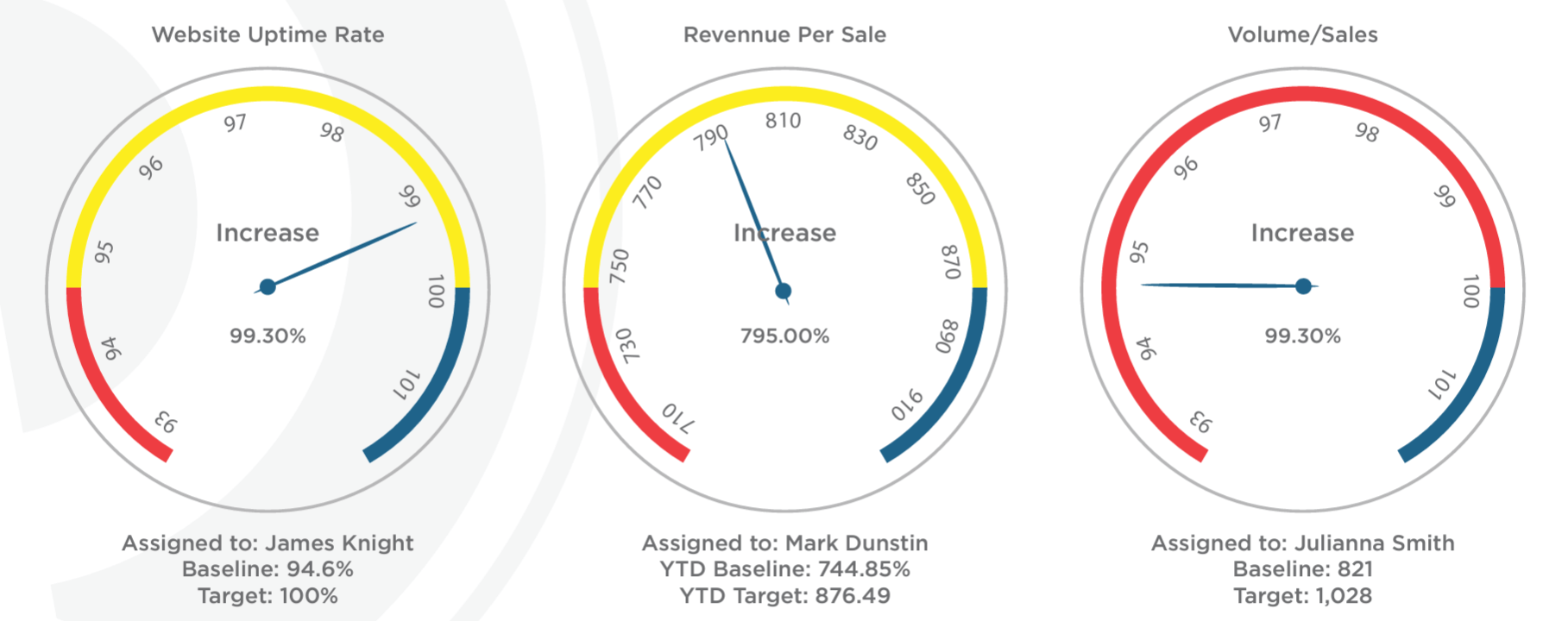
These dashboards also include the executive owner – the person on the management team who is being held responsible for the results. This is a key component that is often missing in dashboards, and it is the single-biggest reason why dashboards fail.
To create a culture of individual accountability, you must assign performance metrics to individuals on your management team. Never allow people to share assignments, as it only serves to lessen accountability, foster finger pointing, and erode execution. Accountable companies follow the one-assignment-one-owner philosophy and tie assignments to performance incentives. In the dashboard example on the previous page, the company went beyond simply assigning executive owners to each of the performance metrics. It also provided complete transparency by including the name of the owner on the dashboard itself.
Mark Dunstin, who “owns” the employee engagement objective, is failing miserably. And while some organizations may argue that identifying the source of the failure may serve no other purpose other than to embarrass Mark, successful companies have learned that such transparency creates an environment in which executives self-correct. After all, who wants to be “called out” in front of their peers, especially when the results are so black and white?
Create Automatic Dashboards with AchieveIt
Creating effective dashboards can be difficult, so why not choose a software solution that can create, track and update your dashboards in real time.
With AchieveIt’s web-based software you receive the ability to:
- Create robust dashboards to display individuals’ progress against your most important business metrics.
- Turn dashboard metrics into point-and-click reports that tell you who is executing to their highest ability, and who is not.
- Align dashboards to all of your business initiatives—strategic, operational, and project.
- Build hierarchical strategic plans and assign individual users their daily, monthly, and quarterly tactics and must dos, while tracking their progress over time.
See it for yourself and request a demo or take a self-guided product walk-through today.

